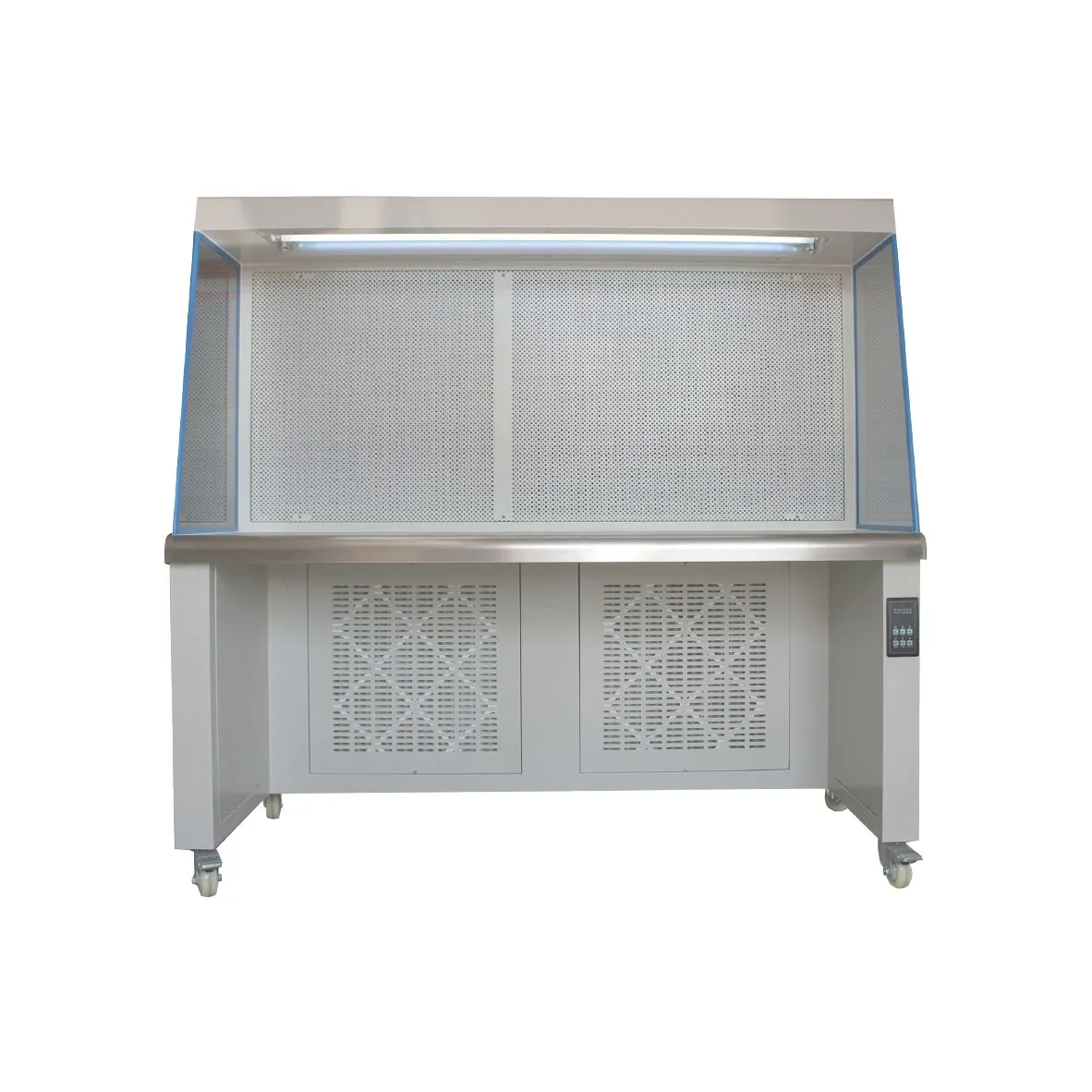
- English
- Español
- Português
- русский
- Français
- 日本語
- Deutsch
- tiếng Việt
- Italiano
- Nederlands
- ภาษาไทย
- Polski
- 한국어
- Svenska
- magyar
- Malay
- বাংলা ভাষার
- Dansk
- Suomi
- हिन्दी
- Pilipino
- Türkçe
- Gaeilge
- العربية
- Indonesia
- Norsk
- تمل
- český
- ελληνικά
- український
- Javanese
- فارسی
- தமிழ்
- తెలుగు
- नेपाली
- Burmese
- български
- ລາວ
- Latine
- Қазақша
- Euskal
- Azərbaycan
- Slovenský jazyk
- Македонски
- Lietuvos
- Eesti Keel
- Română
- Slovenski
- मराठी
- Srpski језик
Which is Better, Horizontal or Vertical Laminar Flow Hood?
2024-10-17
When it comes to selecting the right laminar flow hood for your laboratory or cleanroom, the choice between a vertical and horizontal configuration can be crucial. Both types of hoods are designed to provide a controlled, contamination-free environment, but they differ significantly in their design, functionality, and suitability for specific applications. In this article, we'll explore the key considerations to help you determine which type of laminar flow hood is best for your needs.

Understanding Laminar Flow Hoods
Laminar flow hoods are essential pieces of equipment in many scientific, medical, and industrial settings. They create a unidirectional airflow that removes particles and contaminants from the work area, ensuring a clean and sterile environment. This is particularly important for tasks such as cell culture, tissue handling, and other sensitive procedures that require a high degree of cleanliness.
Horizontal Laminar Flow Hoods
Horizontal laminar flow hoods are designed with the airflow directed horizontally across the work surface. This configuration is often ideal for applications where minimal turbulence near the work surface is crucial. Here are some of the key benefits and considerations of horizontal laminar flow hoods:
Minimal Turbulence:
The horizontal airflow pattern minimizes turbulence and disruption of the work surface, which can be beneficial for delicate or sensitive samples.
Suitable for Small Samples:
Horizontal hoods are often preferred for working with small samples or in confined spaces, as they provide a more focused and controlled airflow.
Ergonomic Design:
The horizontal configuration can be more ergonomic for operators, as it allows for a more natural and comfortable working posture.
Space Efficiency:
Horizontal laminar flow hoods can be more space-efficient in some settings, particularly when they are mounted on walls or in compact areas.
Vertical Laminar Flow Hoods
Vertical laminar flow hoods, on the other hand, are designed with the airflow directed vertically from the top of the hood down to the work surface. This configuration offers its own set of advantages and considerations:
Greater Coverage:
Vertical laminar flow hoods can provide greater coverage and airflow uniformity across a larger work surface, which can be beneficial for larger samples or tasks that require more space.
Ease of Access:
The vertical configuration often allows for easier access to the work surface, as there are no horizontal barriers to obstruct the operator's view or movement.
Flexibility in Placement:
Vertical laminar flow hoods can be placed on tables, stands, or even mounted on walls, providing greater flexibility in terms of positioning and layout within the laboratory or cleanroom.
Cost-Effective:
In some cases, vertical laminar flow hoods may be more cost-effective than horizontal models, particularly for larger work areas or when budget constraints are a consideration.
Choosing the Right Configuration
When choosing between a horizontal and vertical laminar flow hood, it's essential to consider the specific requirements of your work and experiments. Here are some key factors to consider:
Nature of Work:
Assess the type of work you'll be performing in the hood. If it involves delicate or sensitive samples that require minimal turbulence, a horizontal hood may be the better choice. If you need to work with larger samples or require greater coverage, a vertical hood may be more suitable.
Space Constraints:
Consider the available space in your laboratory or cleanroom. Horizontal hoods can be more space-efficient in some configurations, while vertical hoods may offer greater flexibility in terms of placement and positioning.
Budget:
Evaluate your budget constraints. While both types of hoods can vary widely in price, vertical laminar flow hoods may offer more cost-effective options for larger work areas or when budget is a primary consideration.
Ergonomics and Comfort:
Think about the ergonomics and comfort of the operator. Horizontal hoods can provide a more natural and comfortable working posture, while vertical hoods may offer easier access and a clearer view of the work surface.
In summary, the choice between a horizontal and vertical laminar flow hood depends on the specific requirements of your work and experiments. Horizontal hoods are often ideal for applications that require minimal turbulence and are suitable for small samples, while vertical hoods may offer greater coverage, ease of access, and flexibility in placement. By carefully considering the nature of your work, space constraints, budget, and ergonomics, you can select the right laminar flow hood to ensure a clean, sterile, and efficient working environment.



